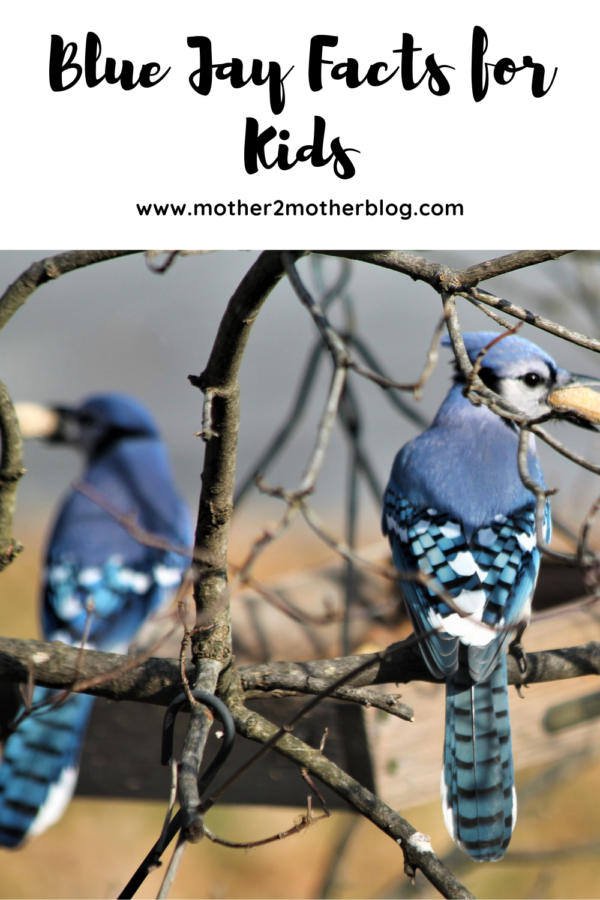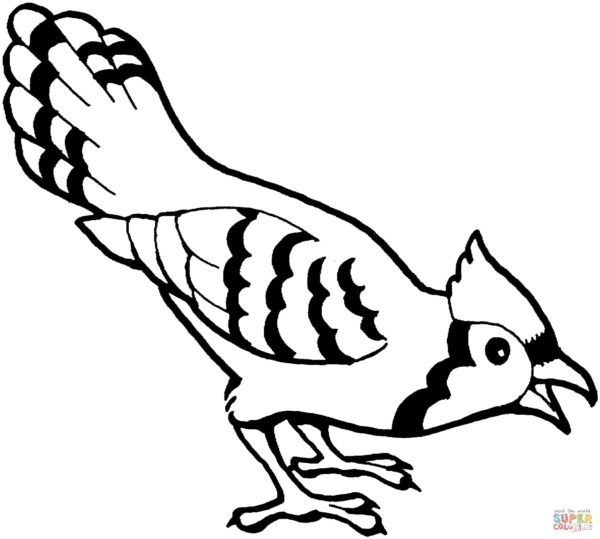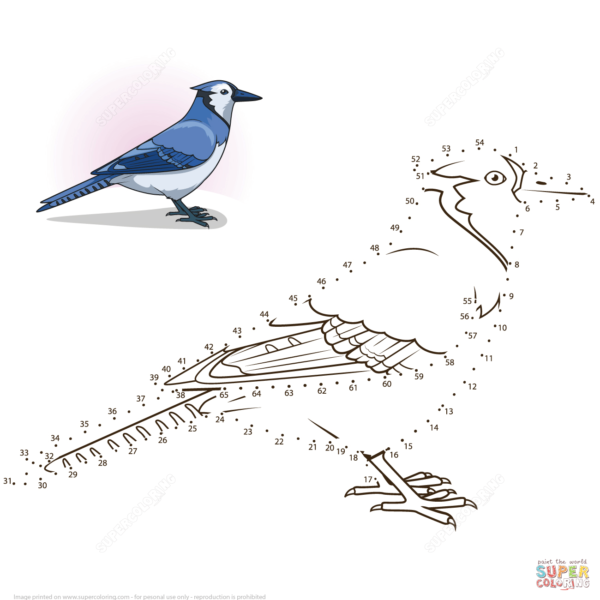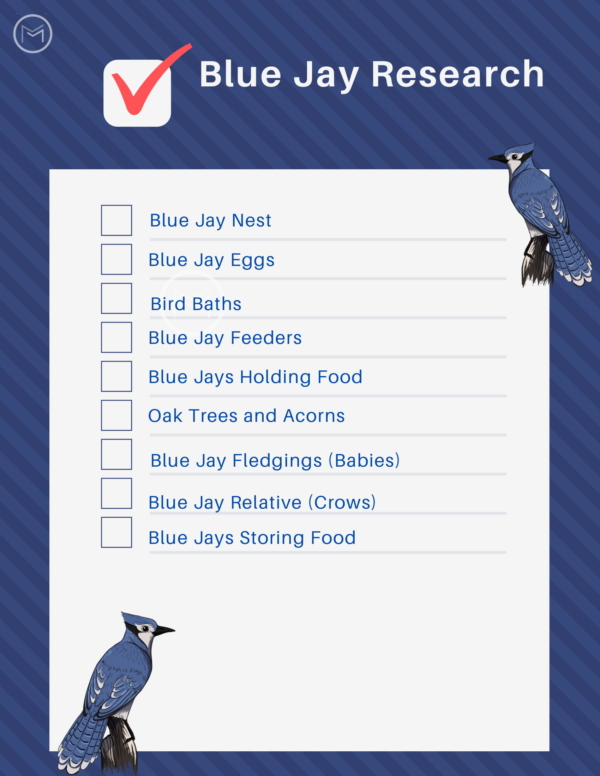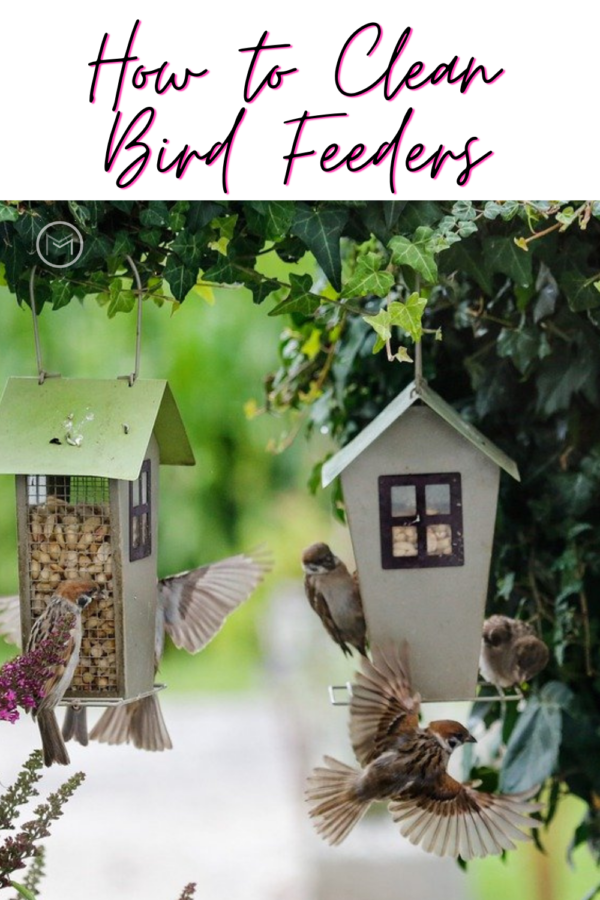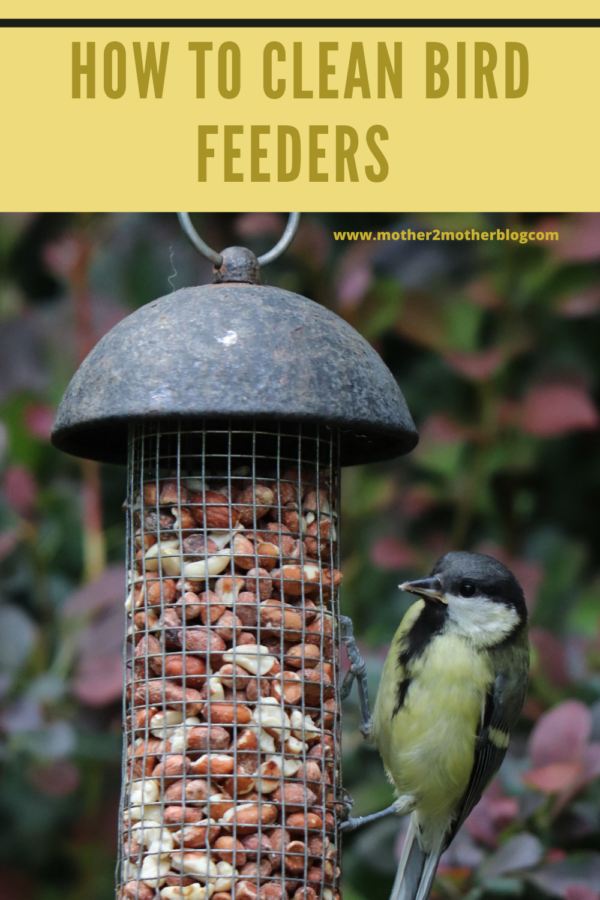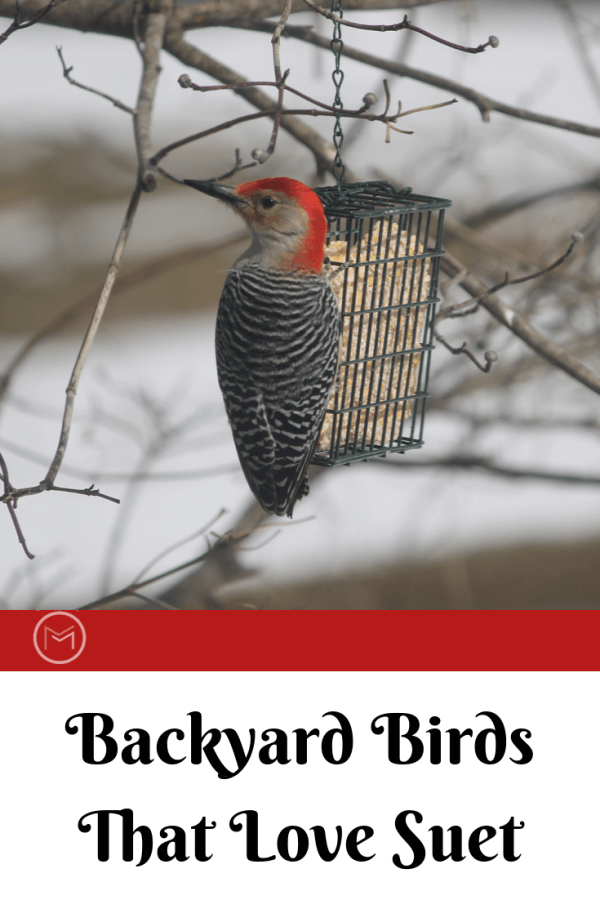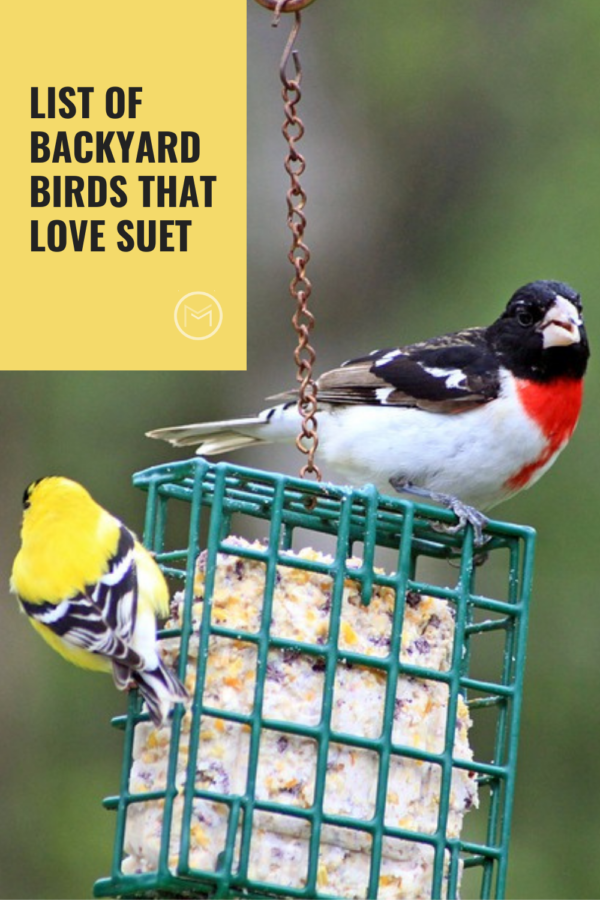Today, I’m sharing backyard bird tips on baby blue jays. I have a flock of beautiful blue jays that come to my feeders. If my feeders are empty, they let me know with their Call, Call, Call sound. I offer them whole shelled peanuts, peanut chips and black oil sunflower seeds. The peanuts is their food of choice for blue jays.
It’s hard to distinguish the male blue jay from the female, they look identical. They only way to truly figure out the identity is to watch the nest. Unfortunately, I haven’t been that lucky. My blue jays nest away from my house so using a cam to record their activities or physically watch them is not an option. However, I have 6 that visit regularly. When one checks out the feeder and it’s filled, they call to the others in their flock. They descent on the feeder in minutes. Blue jays mate for life. As a result, I’m assuming they’re couples.
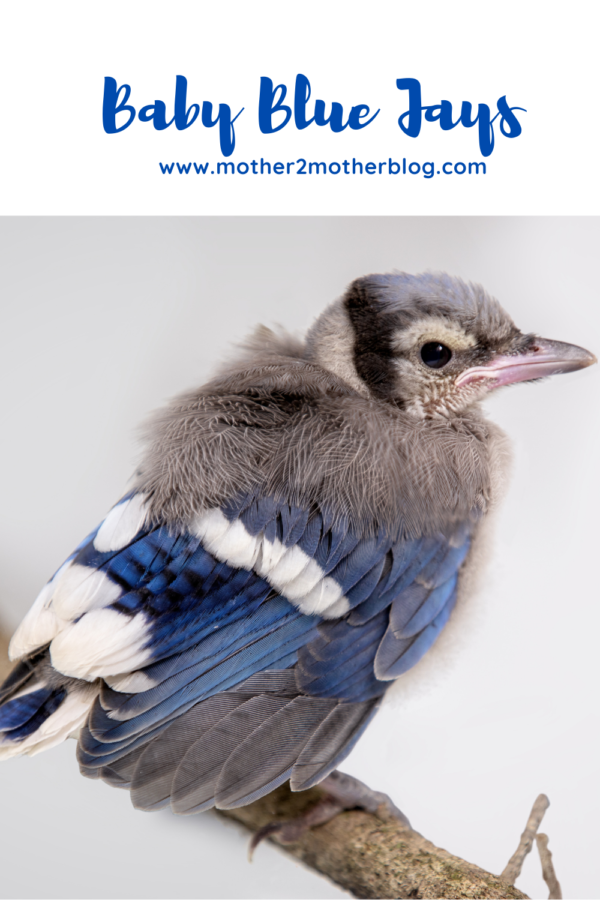
Facts about Baby Blue Jays
- Blue jays lay 2 – 7 eggs in their clutch. However, the usual clutch is 4 or 5 eggs. The eggs are blue or brown with speckles. Blue Jays breed from March to July, and they have one brood a year. Females incubate the eggs while the male retrieves food. The male will continue to retrieve food 8 – 12 days after the eggs have hatched for both mom and babies.
- Once the babies are able to leave the nest, the brood will leave together. This takes place when the babies are around 17 – 21 days old. Mom will encourage them to leave the nest. Babies who have recently left the nest are called fledglings. The Blue Jay fledglings leave the nest before they can fly. Once the babies leave the nest, it doesn’t return.
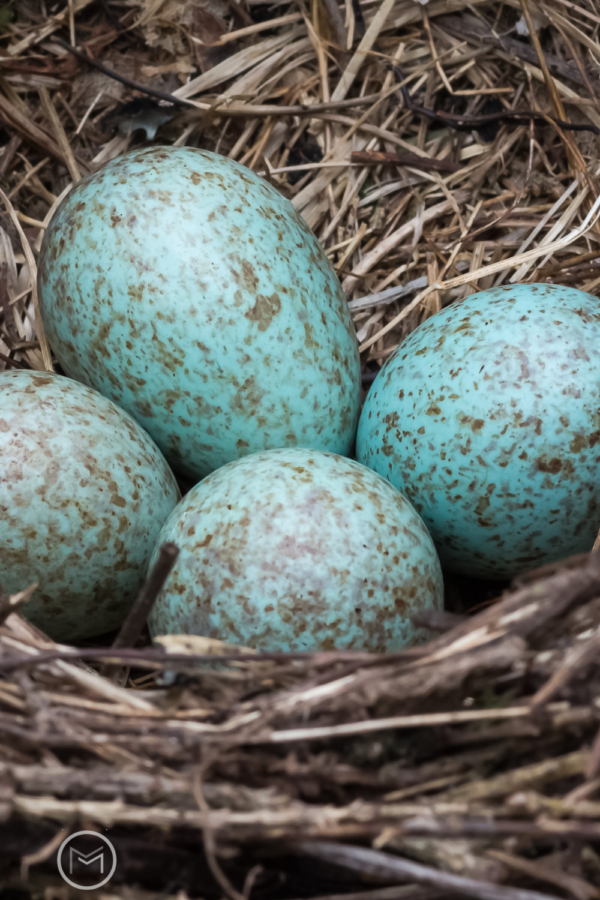
- Are you wondering how they get out of the nest if they can’t fly? They flop out of the nest and land below it. Some move to nearby branches to lower themselves to the ground. On the second or third day, they may move about 50 – 75 feet away from the nest. During this time they are growing and learning. Furthermore, the parents are nearby to protect the babies from predators and to feed them until they learn to fly and fend for themselves. So, if you see a baby bird leave it unless it’s hurt. Mom and dad are watching.
- A baby blue jay will learn everything it needs to survive while it is a fledgling. This usually take about 5 days. It will grow the necessary feathers to help them fly, they will learn how to feed themselves and they will do it all with mom and dad nearby.
- Mom will lead blue jay babies to a safe place at night to ensure they are out of the purview of predators. This is usually under a bush, in a bush or in grass. Mom and dad are always nearby.
- Unfortunately, cats are the biggest threat to baby blue jays. However, the parents will attack cats, humans or any other thing they believe are a threat to their young.
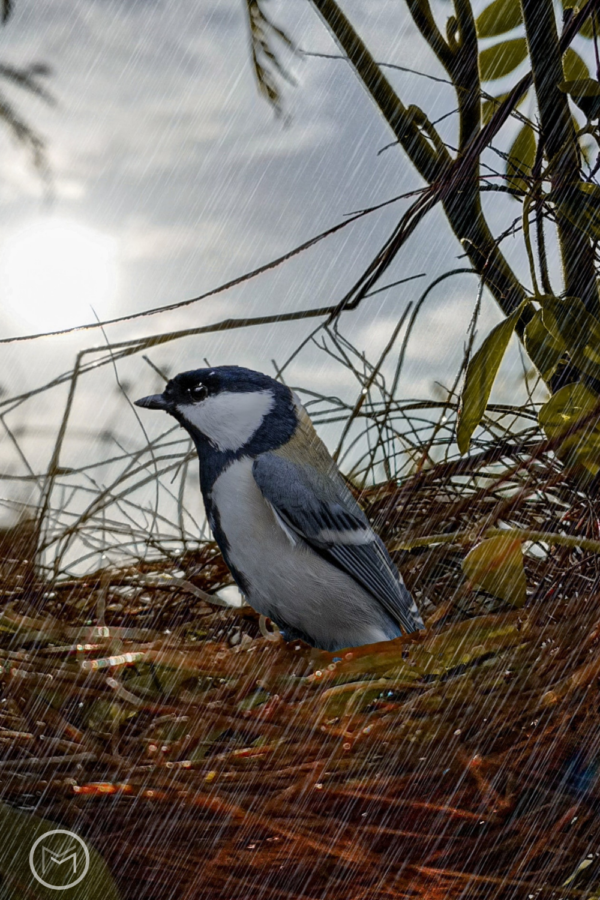
- Baby Blue Jays will stay around the nest and mom for a few months before truly venturing off on their own. The following year, they will find their mate for life and produce a brood of their own.
I hope your found our baby blue jay facts insightful. Be sure to check on my Unique Facts about Blue Jays and Blue Jay Facts for Kids.
